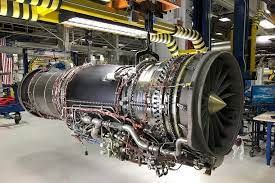UPSC Daily Current Affairs- 24th June 2023 | Current Affairs & Hindu Analysis: Daily, Weekly & Monthly PDF Download
GS-I
Belize
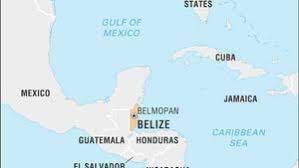
Why in News?
Recently, the World Health Organization (WHO) has certified Belize as a malaria-free country.
About Belize:
- It is located on the northeast coast of Central America and south of the Yucatán Peninsula.
- It has a land of mountains, swamps, and tropical jungle.
- It is bounded by Mexico to the north, Guatemala to the west and south, and the Caribbean Sea to the east.
- Geographical features
- The southern half of the country is dominated by the rugged Maya Mountains, a plateau of igneous rock cut by erosion into hills and valleys that stretch in a southwesterly to northeasterly direction.
- The northern half of the country consists of limestone lowlands and swamps less than 200 feet (60 metres) above sea level.
- Along the coast of this country, there is Belize Barrier Reef which is the second largest barrier reef in the world.
- The reef reserve system was designated a UNESCO World Heritage site in 1996.
Source: The Hindu
PM gifts Upanishads to Joe Bide
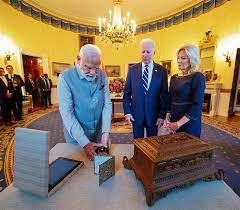
Why in News?
PM Modi presented the US President Joe Biden with a number of gifts, including a first edition print of the book The Ten Principal Upanishads from 1937.
Ten Principal Upanishads
- The Ten Principal Upanishads is translated from Sanskrit by Shri Purohit Swami, a scholar of Hindu scripture, and Irish poet WB Yeats.
- It is considered to be one of the best translations of the Upanishads, some of the most important Hindu religious texts.
- Written in the mid-1930s, the book was a product of Yeats’ desire to create a translation which is true to the original text while still being accessible for the layperson.
Two categories of Hindu scriptures
There are broadly two categories of Hindu sacred texts: Shruti (loosely translated as “the revealed”) and Smriti (“the remembered”).
[I] Shruti
- The Shruti category is considered to be the most authoritative and consists of the four Vedas (Rig, Yajur, Sama and Atharva) and accompanying texts.
- These include Brahmanas (ritual texts), Aranyakas (“forest” or “wilderness” texts), and Upanishads (philosophical texts).
[II] Smruti
- The Smruti category of Hindu scriptures is less authoritative – in many ways they are considered to be derived from the first – but more popularly known.
- These include the great epics of Ramayana and Mahabharata, Dharmashastras, Puranas and all other post-Vedic scriptures.
What are the Upanishads?
- The Upanishads, also known as the Vedanta – as they signal the end of the total Veda – speculate about the ontological connection between humanity and the cosmos.
- They serve as foundational texts in many traditions of Hindu theology and have hence attracted far more attention than the Vedas themselves.
- Dated to roughly 800-500 BC, the Upanishads discuss concepts such as transmigration, which have today become central to Hindu tradition.
- Upanishads signify texts that were traditionally transmitted in intimate, teacher-student settings, imparting profound knowledge and spiritual insights.
(A) Spiritual Essence
- The Upanishads form the philosophical portion of the Vedic scriptures known as the Vedanta.
- They explore the metaphysical and mystical aspects of existence, aiming to unravel the nature of reality, the self, and the ultimate truth.
(B) Origins
- The Upanishads were composed between 800-500 BC, following the earlier Vedic texts.
- Various sages, seers, and scholars authored the Upanishads, resulting in a rich diversity of philosophical perspectives.
(C) Themes and Subjects
- The Upanishads delve into profound concepts, such as the nature of the self (atman), the ultimate reality (brahman) (NOT Brahmin), and the relationship between the two.
- They explore metaphysical inquiries, the nature of existence, the concept of karma, the path to liberation (moksha), and the interconnectedness of all beings.
Key Upanishads and Teachings
- While there are over 200 Upanishads, a set of principal Upanishads is considered the most significant and influential.
- There are ten main (or principal) Upanishads:
- Esha
- Kena
- Katha
- Prashna
- Mundaka
- Mandukya
- Taittiriya
- Aitareya
- Chandogya
- Brihadaranyaka
WB Yeats and his translation of Upanishads
(A) Who was WB Yeats?
- WB Yeats (1865-1939) was born in Ireland and is regarded as one of the most influential figures in modern English literature.
- He was a key figure in the Irish Literary Revival, which sought to promote Irish culture, folklore, and independence.
(B) His Interest in the Upanishads
- Yeats’ interest in Indian culture and philosophy predates his encounter with the Upanishads.
- In 1885, he met Mohini Chatterjee, a prominent figure in Bengal’s Theosophical circles, who visited Dublin. This meeting sparked Yeats’ early engagement with Indian themes in his poetry.
(C) Friendship with Rabindranath Tagore:
- Yeats developed a close friendship with Rabindranath Tagore, the renowned Indian poet, philosopher, and Nobel laureate.
- In 1912, they met in London, where Tagore introduced Yeats to his translated work, including Gitanjali.
(D) Introduction to the Upanishads:
- William Rothenstein, a photographer, sent Yeats the manuscripts of Tagore’s partial translation of the Upanishads.
- Impressed by their spiritual depth and cultural significance, Yeats became intrigued by the Upanishads’ teachings.
- Disappointed with the available English translations of the Upanishads, Yeats sought to create a translation that was both true to the original text and accessible to a wider audience.
- He collaborated with Sanskrit scholar Shri Purohit Swami, who helped him translate the Upanishads with an emphasis on clarity and understanding.
Source: The Hindu
GS-II
Article 370
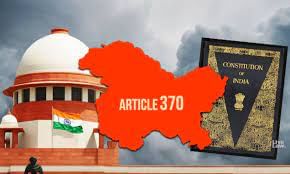
Why in News?
The Home Minister Amit Shah said that Article 370 was a big impediment in the development of Jammu and Kashmir.
He further claimed that its abrogation has ensured full integration of J&K with the Union, and unprecedented development in the region.
About Article 370:-
- Article 370 of the Indian constitution dealt with the provision of certain special powers to the state of Jammu and Kashmir.
- It grants a ‘temporary’ autonomous status to the state of Jammu & Kashmir (J&K).
- The article was an outcome of Kashmir’s accession to Indian after the Independence.
Historical Background:-
- Post independence, Jammu & Kashmir (J&K) acceded to the Dominion of India by signing the Instrument of Accession on 26 October 1947 with certain special provisions.
- On the same line, Article 370 was added to the Indian constitution in 1949.
- It was added as a ‘temporary provision’, giving certain exemptions to the state of Jammu & Kashmir
Provisions of Article 370:-
- Article 370 permitted J&K to draft its own Constitution.
- It further restricted the Indian Parliament’s legislative powers in the state.
- Except for Defense, Foreign Affairs Finance and Communications, the Indian Government was required State Government’s nod to apply all other laws.
- The central govt. had no power to impose financial emergency in the state.
- Emergency could be imposed only on the grounds of internal disturbances and imminent danger from a foreign enemy.
- Indian nationals belonging to other states cannot buy land or property in the state of J&K.
- Woman who marries a person belonging to any other state loses her right to ownership.
- These provisions gave the state government control on how it needs to govern the state without worrying about the consent of the central government.
Removal of Article 370
- In accordance with the authority afforded by Clause (1) of Article 370 of the Indian Constitution, the President of India issued the Constitution (Implementation to Jammu and Kashmir) Order, 2019 on August 5, 2019, repealing the special status previously accorded to Jammu and Kashmir.
- Jammu and Kashmir no longer has its own constitution, flag, or anthem.
- Its population no longer has dual citizenship as a result of the repeal of Article 370.
- Jammu and Kashmir now abide by all legislative amendments made by the parliament, including the Right to Information Act and the Right to Education Act.
- Jammu & Kashmir is fully covered by the Indian Constitution and all 890 Central legislation.
Source: AIR
What is Medicines Patent Pool (MPP)?
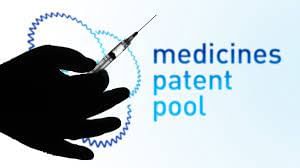
Why in News?
The Medicines Patent Pool (MPP) has entered into sub-licence agreements with Indian and Indonesian companies to produce generic versions of the cancer drug Nilotinib.
- Nilotinib is used in the treatment of chronic myeloid leukaemia, a type of blood cancer.
What is Medicines Patent Pool (MPP)?
- Mission and Purpose: The MPP is a United Nations-backed organization focused on increasing access to life-saving medicines for low- and middle-income countries.
- Addressing IPR: The MPP works to overcome barriers related to intellectual property rights and patents that limit the availability and affordability of essential medicines.
- Voluntary Licensing Agreements: The MPP negotiates voluntary licensing agreements with pharmaceutical companies to allow the production of generic versions of patented medicines.
- Production of Affordable Generics: By securing licenses, the MPP enables qualified manufacturers in low- and middle-income countries to produce and distribute affordable generic medicines.
Need for MPP
- Collaborative Approach: The MPP collaborates with governments, non-profit organizations, civil society groups, and pharmaceutical companies to address global health challenges and promote access to medicines.
- Focus on Priority Diseases: The MPP’s efforts are particularly significant in diseases like HIV/AIDS, tuberculosis, hepatitis C, and other priority areas where access to affordable medications is crucial.
- Sustainable Supply of Generic Medicines: Through licensing agreements, the MPP ensures a sustainable supply of quality-assured generic medicines, promoting market competition and expanding treatment options.
- Improving Health Outcomes: The MPP’s work reduces the burden of high drug costs and enhances access to life-saving treatments, ultimately improving health outcomes and saving lives.
- Benefit for Low- and Middle-Income Countries: The MPP’s initiatives directly benefit patients in low- and middle-income countries by increasing access to affordable medicines and reducing disparities in healthcare.
Recent agreements signed
- Licence Agreement with Novartis: In October 2022, the MPP signed a licence agreement with Novartis Pharma AG, the Switzerland-based pharmaceutical corporation that holds the patent for Nilotinib.
- First Sub-Licence Agreements: The recent sub-licence agreements with Indian companies Eugia, Hetero, and Dr. Reddy’s Laboratories, along with the Indonesian firm BrightGene, mark the first such agreements for a cancer treatment drug by the MPP.
Benefits
- Generic Versions of Nilotinib: The licensed manufacturers can produce generic versions of Nilotinib.
- Manufacturing: The selected manufacturers have the rights to manufacture generic Nilotinib in India and seven middle-income countries.
- Supply in 44 Territories: The non-exclusive licence agreement allows for the supply of generic Nilotinib in 44 territories covered by the agreement, subject to local regulatory authorisation.
- Affordable Treatment Option: Charles Gore, the executive director of the MPP, states that the production of generic Nilotinib will provide an affordable treatment option for people diagnosed with chronic myeloid leukaemia in the covered countries.
- Increasing Access to Cancer Medication: The MPP’s initiative aims to improve access to essential cancer medications by reducing costs and increasing availability.
Source: Indian Express
GS-III
GE’s F414 Engines
Why in News?
Recently, the American multinational corporation General Electric (GE) announced it has signed an agreement with India’s state-owned Hindustan Aeronautics Ltd (HAL) to make GE’s F414 engines for Light Combat Aircraft (LCA) Tejas Mk2.
About GE’s F414 Engines:
- It is a turbofan engine which has been in use by the US Navy for more than 30 years.
- It is featured with advanced technology such as Full Authority Digital Electronic Control (FADEC) — the latest aircraft ignition and engine control system that controls engine performance digitally.
- Only eight nations have F414-powered aircraft in operation in the world.
Key facts about LCA Mk2
- It is an advanced version of Light Combat Aircraft (LCA) Mk1A, which is being used by the Indian Air Force (IAF).
- It is capable of integrating all indigenous weapon systems and a number of foreign armaments along with eight Beyond Visual Range Missiles (BVRMs).
- No other fighter aircraft of this class is capable of carrying eight BVR missiles simultaneously.
- It will have a mission endurance of 120 minutes and is capable of carrying 6.5 tonnes of weapons payload.
- It will be equipped with standoff weapon systems. The weaponry will also include an air-to-ground, long-range deep strike missile, SCALP.
Source: The Hindu
In vitro fertilization (IVF) procedure
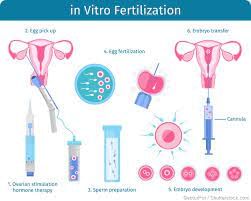
Why in News?
Recently, a consumer panel slapped ₹1.5-crore fine on a Delhi hospital for sperm mix-up during In vitro fertilization (IVF) procedure.
Background:-
- A West Delhi-based hospital that performed an in vitro fertilization procedure for a Hyderabad-based couple, by using donor semen that did not belong to the husband, has been instructed by the National Consumer Disputes Redressal Commission (NCDRC) to pay a fine of ₹1.5 crore for negligence and resorting to unethical practices.
About In vitro fertilization (IVF) procedure:-
- IVF is a type of assisted reproductive technology (ART).
- ART: includes medical procedures used primarily to address infertility.
- This involves procedures such as IVF, intra-cytoplasmic sperm injection (ICSI), cryopreservation of gametes or embryos, and/or the use of fertility medication.
- IVF procedure: It works by using a combination of medicines and surgical procedures to help sperm fertilize an egg, and help the fertilized egg implant in the uterus.
Process of IVF:-
- It involves retrieving eggs from ovaries .
- These are then manually combined with sperm in a lab for fertilization.
- Several days after fertilization, the fertilized egg (now called an embryo) is placed inside a uterus.
- Pregnancy occurs when this embryo implants itself into the uterine wall.
Benefits of IVF: IVF can be used to Treat Infertility of Different Types such as:-
- Blocked or damaged fallopian tubes.
- Male factor infertility including decreased sperm count or sperm motility.
- Women with ovulation disorders, premature ovarian failure and uterine fibroids.
- Women who have had their fallopian tubes removed.
- Individuals with a genetic disorder.
- Unexplained infertility.
Challenges Faced with IVF
Multiple Births:-
- IVF increases the risk of multiple births if more than one embryo is implanted in the uterus.
Premature Delivery and Low Birth Weight:-
- Use of IVF slightly increases the risk that a baby will be born early or with a low birth weight.
Ovarian Hyperstimulation Syndrome (OHS):-
- Use of injectable fertility drugs can cause OHS, in which ovaries become swollen and painful.
Miscarriage:-
- The rate of miscarriage for women who conceive using IVF with fresh embryos is similar to that of women who conceive naturally about 15 to 25 percent but the rate increases with maternal age.
Stress
- Use of IVF can be financially, physically and emotionally draining.
National Consumer Disputes Redressal Commission (NCDRC):-
- Established : 1988
- HQ: New Delhi.
- It is a quasi-judicial commission in India set up under the Consumer Protection Act of 1986.
- Head of commission: a sitting or retired judge of the Supreme Court of India.
- The Act mandates the establishment of Consumer Protection Councils at the Centre as well as in each State and District, to promote consumer awareness.
- These councils are :-
- Central Council: is headed by Minister In-charge of the Department of Consumer Affairs in the Central Government
- State Councils: is headed by the Minister In-charge of Consumer Affairs in the State Governments.
- It also provides for a 3-tier structure consisting of:-
- National Commission
- State Commissions and
- District Commissions
SOURCE: THE HINDU
|
63 videos|5408 docs|1146 tests
|


